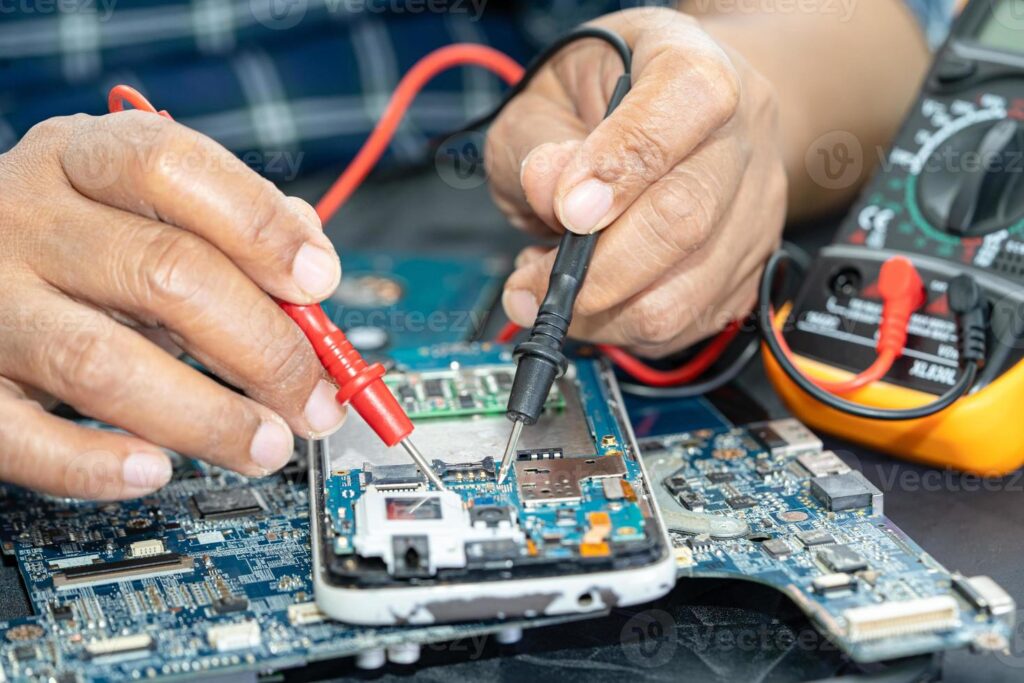



Mobile phone repair is a thriving industry that caters to the growing demand for device maintenance and troubleshooting. With the increasing dependency on smartphones for personal, social, and professional use, the need for quick and reliable repair services has surged. Mobile repair technicians provide a range of services, including fixing broken screens, replacing batteries, repairing charging ports, and troubleshooting software issues. Let’s break down the major aspects of mobile phone repairing:
Common Mobile Repairs
Screen Repairs: One of the most common mobile phone repairs is screen replacement. A cracked or shattered screen can make a device difficult to use and detract from its aesthetic appeal. The screen is made up of both the glass outer layer and the LCD display, both of which can be damaged easily from drops or impacts.
Battery Replacement: Over time, the battery of a mobile phone degrades, leading to shorter battery life. Replacing the battery can restore a phone’s performance. Some phones have non-removable batteries, requiring a technician with specialized skills to open the device and replace the battery.
Charging Port Issues: Charging ports can accumulate dust, debris, or corrosion, which can cause charging problems. In some cases, the charging port itself may be damaged, requiring a replacement to allow the phone to charge properly.
Camera Repairs: The front and rear cameras on modern smartphones are used for a variety of functions, including taking pictures, video calls, and scanning QR codes. If the camera becomes faulty or is cracked, it can be replaced by a technician.
Software Issues: Software-related problems such as freezing, crashing, or unresponsiveness can be resolved through troubleshooting. Sometimes a factory reset, software update, or reinstallation of the operating system is required to restore the phone’s performance.
Water Damage Repair: Water damage is another common issue. If a phone gets wet, the internal components can short-circuit. In some cases, a technician may be able to perform a water damage restoration process, though success depends on how long the phone was exposed to water and the extent of the damage.
Tools and Equipment for Mobile Repairing
Mobile repair technicians use specialized tools to carry out repairs. These include precision screwdrivers, suction cups, tweezers, and heat guns for opening devices and removing components safely. Additionally, there are diagnostic tools that help identify software-related issues, as well as soldering equipment for repairing or replacing small, delicate parts like charging ports and internal components.
Repair Process
The repair process generally involves the following steps:
- Diagnosis: The first step is to identify the issue with the phone. Technicians often use diagnostic tools to check both the hardware and software for problems.
- Disassembly: Once the issue is identified, the phone is carefully opened, often with the use of a heat gun to soften adhesive or special tools to avoid damaging the device.
- Replacement/Repair: Damaged parts like screens, batteries, or charging ports are replaced with new ones, and soldering may be used for fixing smaller internal parts.
- Reassembly: After the repair is completed, the phone is carefully reassembled, and all parts are secured back in place.
- Testing: Once the phone is put back together, it is tested to ensure that all functions, including touch sensitivity, battery charging, and camera, are working properly.
The Importance of Professional Repair
While some mobile repairs can be done at home with the right tools and knowledge, it is often recommended to seek professional help. Professional repair technicians have the necessary expertise and tools to avoid causing additional damage. They also offer warranties on their repairs, providing peace of mind for customers.
Mobile Repairing as a Career
For individuals interested in mobile phone repair as a career, it is essential to gain technical knowledge and practical experience. Many repair professionals undergo training in electronics and smartphone technology, which can be obtained through formal courses or apprenticeships. In addition to technical skills, customer service is an important part of the job, as dealing with frustrated customers and providing excellent service can lead to repeat business.
Conclusion
Mobile phone repair is an essential service in today’s tech-driven world. As smartphones become more advanced and integral to our daily lives, the demand for mobile repair services continues to grow. From simple screen replacements to complex software issues, mobile repair technicians play a crucial role in keeping devices functioning efficiently. With the right skills, tools, and customer service, mobile repairing can be a rewarding and lucrative career option.



